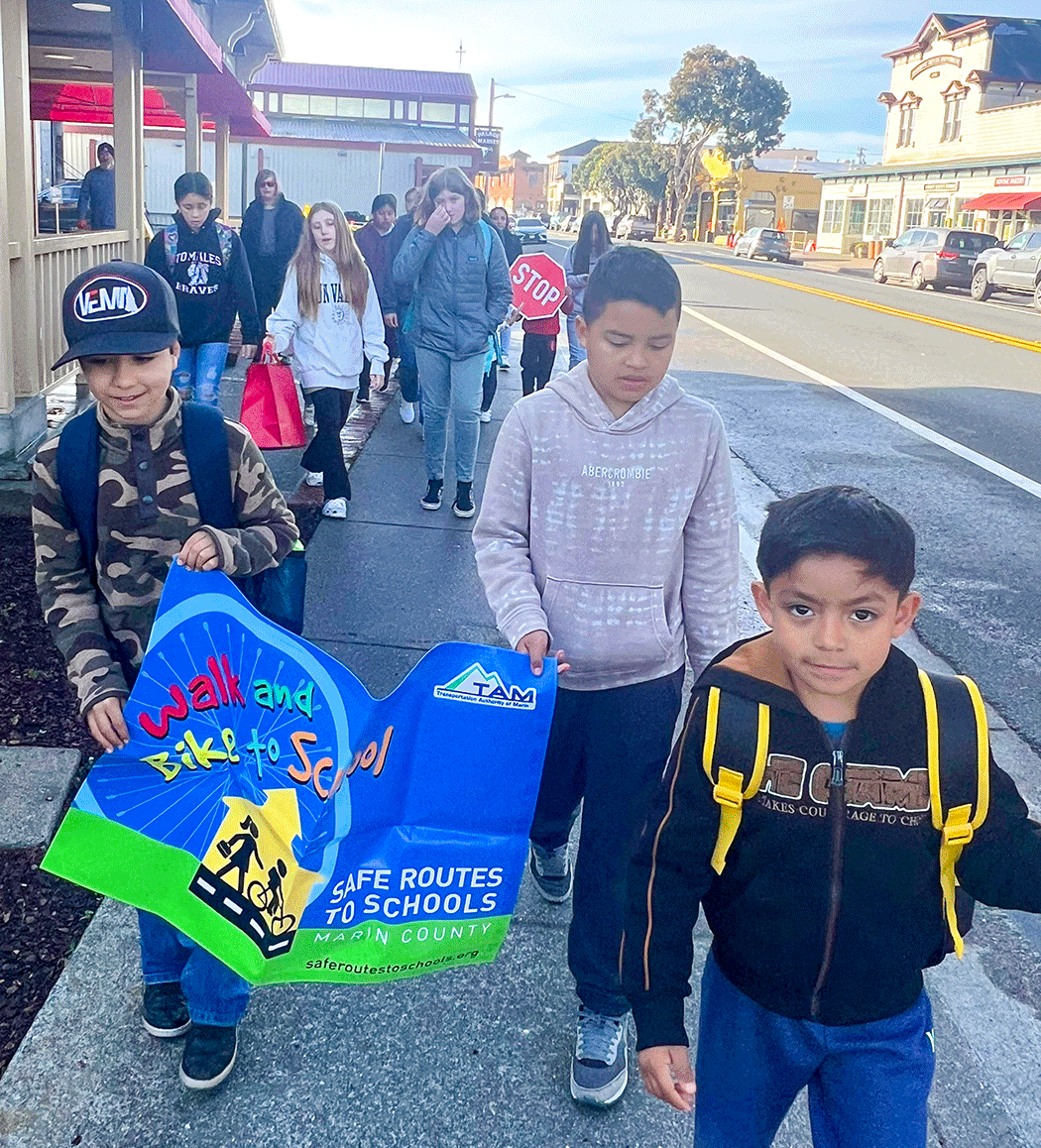
Volunteer Luncheon
Supplies for the Fall semester will be distributed at the end of the meeting.
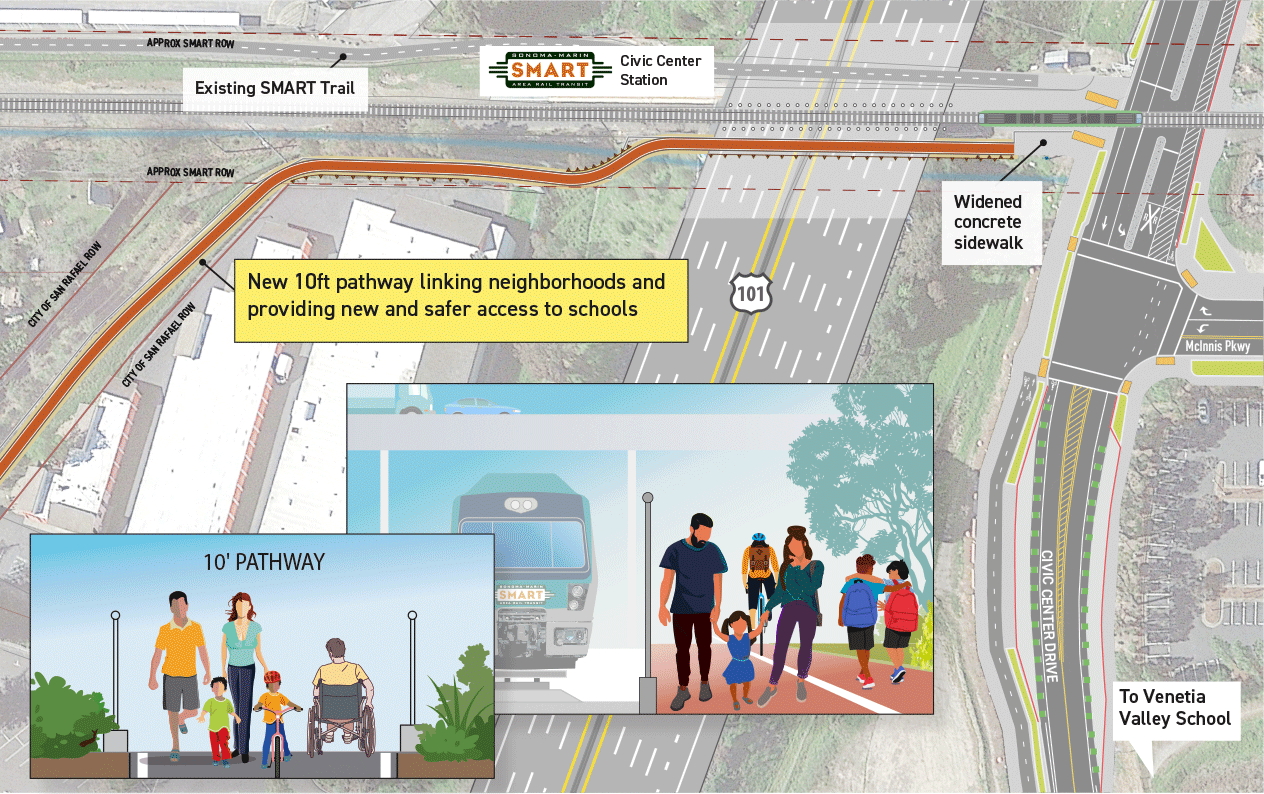
A highly desired bicycle and pedestrian link in northern San Rafael connecting residents to transit, shopping, schools and parks is getting $1.94 million in federal funds. The new path will run between Merrydale Road and Civic Center Drive and will serve students traveling to and from Venetia Valley School. The “Rafael Meadows Safe Crossing” project will create a 10-foot-wide multi-use path alongside the SMART Civic Center Station train tracks, under Highway 101. Additional funding is being sought to be able to complete the project. It is hoped that the project will be ready before the 2026/2027 school year.
Walkers and rollers from Venetia Valley school will be able to bypass busy North San Pedro Road entirely during their commute to school by using this 500-feet long corridor.
The pathway will link Rafael Meadows and other neighborhoods west of US Highway 101 with existing multi-use paths on the east side. Currently, to reach the school, active travelers must go along busy Merrydale Road and North San Pedro Road, both of which have fast moving vehicles, long crossings, and highway ramps.
The project was initially identified through an inclusive planning process involving Safe Routes to Schools, students, parents, and staff from the K-8 School. The site where the pathway will be built is owned by several different groups, making coordination challenging. Consensus was reached for the good of the community, thanks in part to a walk audit held by Safe Routes to Schools that brought together community members, City staff, SMART, and Caltrans.

Under the guidance of law enforcement, schools throughout the county are now planning to restrict parking on campuses to “legal” e-bikes next fall. The crackdown came as a result of serious crashes reported among minors.
In a recent letter to Tam Unified High School parents, the Central Marin Police Authority, Mill Valley Police Department, Fairfax Police Department, and Ross Police Department defined, according to California law, what makes an e-bike legal on roads and pathways. Both of the following must apply:
- The motor on the e-bike cannot emit power in excess of 750 watts; AND
- The throttle control on an e-bike cannot enable it to travel faster than 20 mph at any time.
The above mentioned specs are stipulated in California Vehicle Code Section 312.5. According to law enforcement, if a throttle device sold as a class 2 is capable of being switched into going faster than 20 mph on motor power alone, these devices are not considered low-speed electric bicycles, but resemble electric motorcycles.
E-bikes provide many benefits including teen independence and traffic and pollution reduction. But they must be legal. A census done by Safe Routes to Schools in November and April showed that e-devices represented on average 30% of all middle school bicycles and 50% at high schools in Marin. The vast majority have high-power throttle motors incorrectly sold as class 2. These brands do not require pedaling to propel them as do the less popular class 1 and 3.
Safe Routes suggests parents confirm that the speed and throttle control on their child’s e-bike meets California requirements. Here is more e-bike information from our Winter newsletter.

The Transportation Authority Marin’s Safe Routes to Schools program was selected to receive this year’s Golden Bell Award by the Ross Valley School District (RVSD). The Golden Bell recognizes Safe Routes to Schools’ 24-year district partnership fostering safe and healthy travel to and from schools.
The award was announced at the May district board meeting. Safe Routes’ program director Gwen Froh was present to receive the award. “It’s especially incredible to be recognized by the RVSD where Safe Routes started,” she said. Marin Safe Routes began in 2000 as a pilot program at Manor elementary in Fairfax, a district school. Safe Routes to Schools is now a national program.
Citing Safe Routes’ mission to ensure children get to school safely, and make it fun,” RSVD Superintendent Marci Trahan thanked the program “for everything you do, every single day.”
Superintendent Trahan also acknowledged the program’s infrastructure studies and data collection to create safe routes: “Safe Routes to Schools always wants to know from the school district, ‘what are you experiencing, what are you seeing?’ And that’s where the ideas are generated to make getting to school safe.”
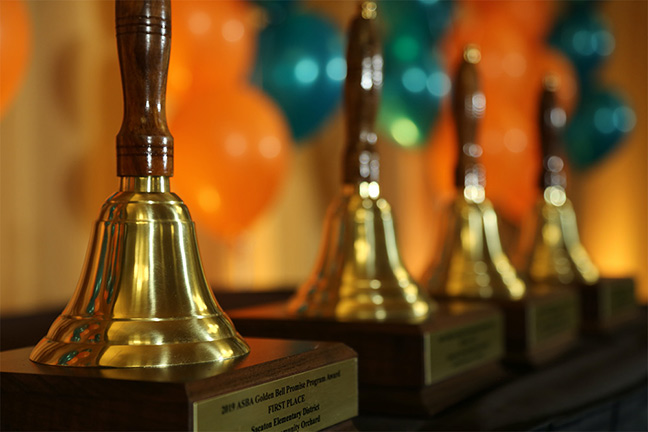
The countywide Golden Bell event to honor Marin teachers, school staff and community partners will be held May 23 at Dominican College. “This honor is to be shared with all of our parent volunteers, teachers, students, administrators and city officials. Their commitment is why Safe Routes is successful,” Froh said.
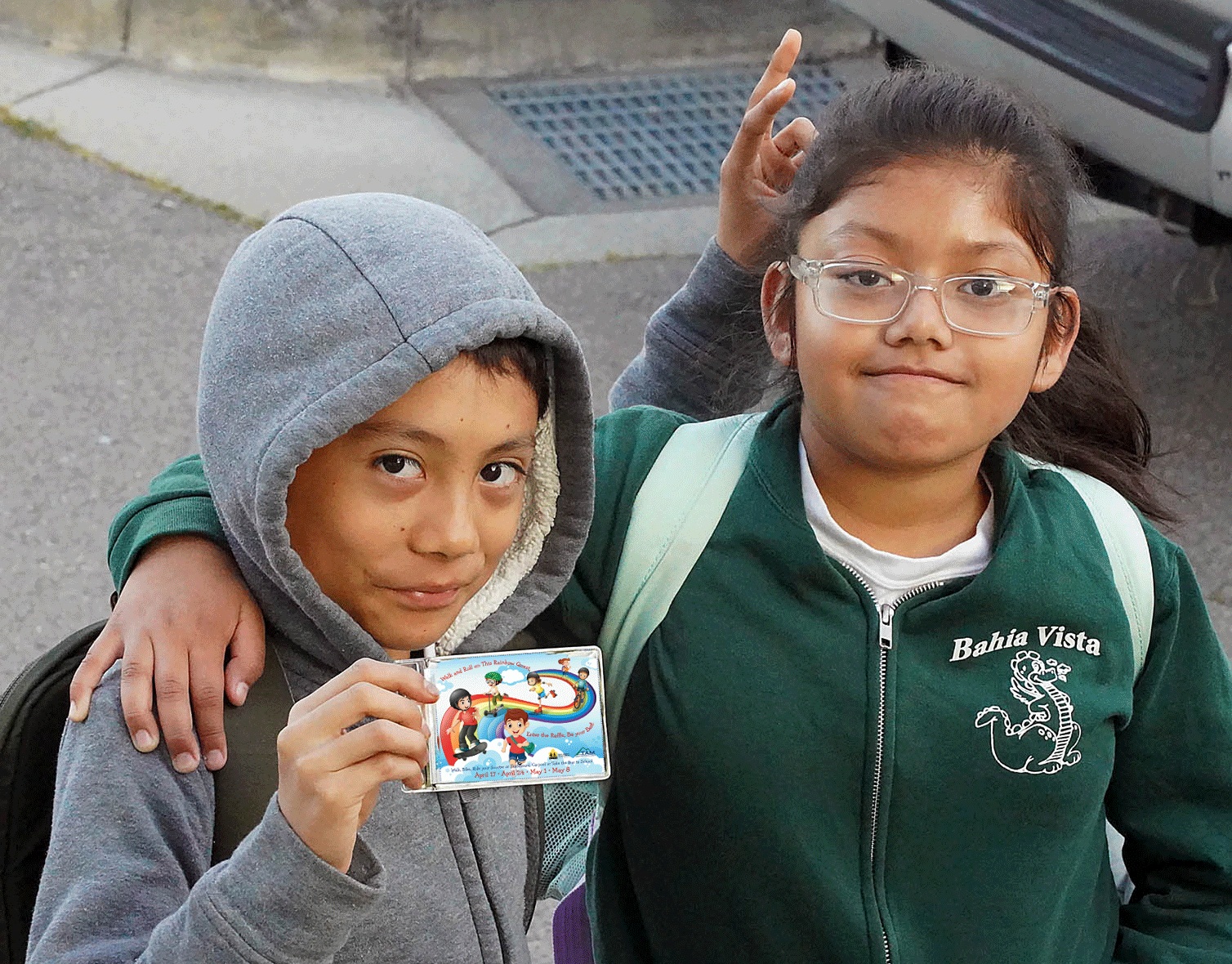
Marin students enthusiastically embraced the Rainbow Challenge organized by Safe Routes to Schools, which required students to walk or bike to school weekly for four consecutive Wednesdays. Over 5,000 students from 42 schools joined in. The challenge, which occurred between April 17 and May 8, was this year’s iteration of an annual contest that focuses on the creation of a healthy habit and reducing traffic.
“The contest generated lots of excitement,” said Charlie Vaughan-Griffith, parent volunteer at Edna Maguire in Mill Valley. “I think the consistency of the four-week challenge enabled kids and parents to focus on every Wednesday as a Walk & Roll day.”
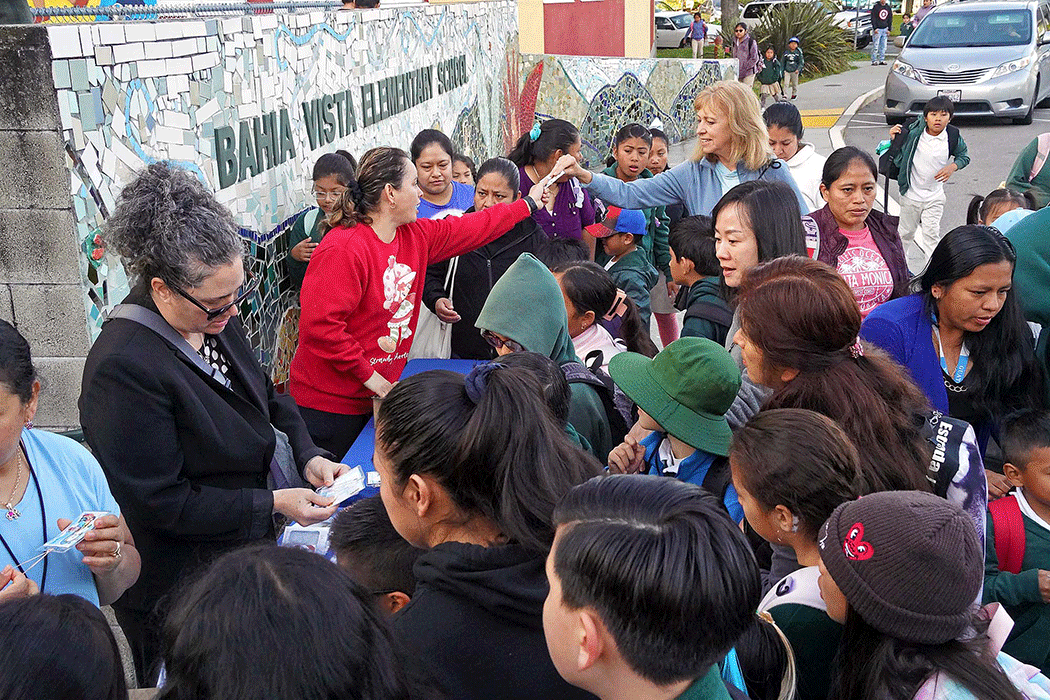
Notably, the contest included most schools from underserved communities in West Marin, San Rafael, and Novato. Monica Leifer, the SR2S bilingual coordinator, highlighted how those schools were the first ones to take on the challenge –and the fun–, underscoring Safe Routes’ steadfast commitment to equity and inclusivity.
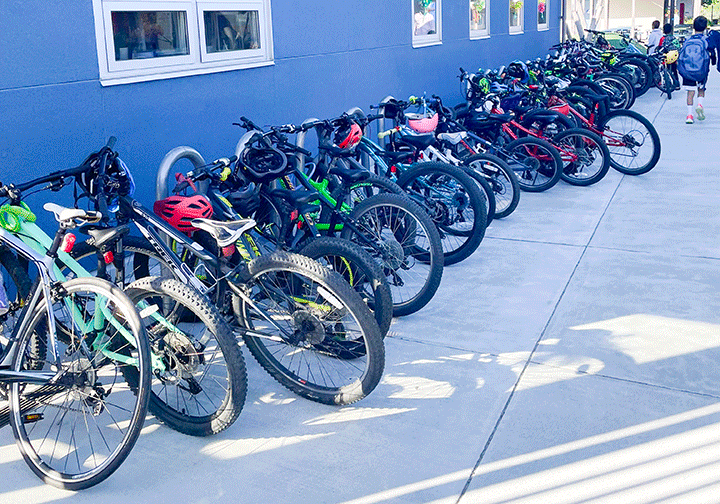
The culmination of the Rainbow Challenge on May 8 coincided with National Bike to School Day. Schools marked the occasion with lively celebrations.
Police officers greeted walkers and riders at Laurel Dell, Neil Cummins, Bacich, and Bahia Vista and distributed gleaming Police Department stickers to students.
In addition to police, some schools also had their respective fire departments escorting bike trains. One of them, Pleasant Valley, where the Marin Independent Journal was present, reported “massive” participation. Tam Valley Elementary organized a bike parade with the Southern Marin fire department down Marin Avenue. At Wade Thomas, over 100 children and parents joined a parade of walkers and rollers escorted by a fire truck, according to the organizer, Jason Cardillo.
Sun Valley celebrated with walking and biking groups and over 150 students showing up at the welcome table..
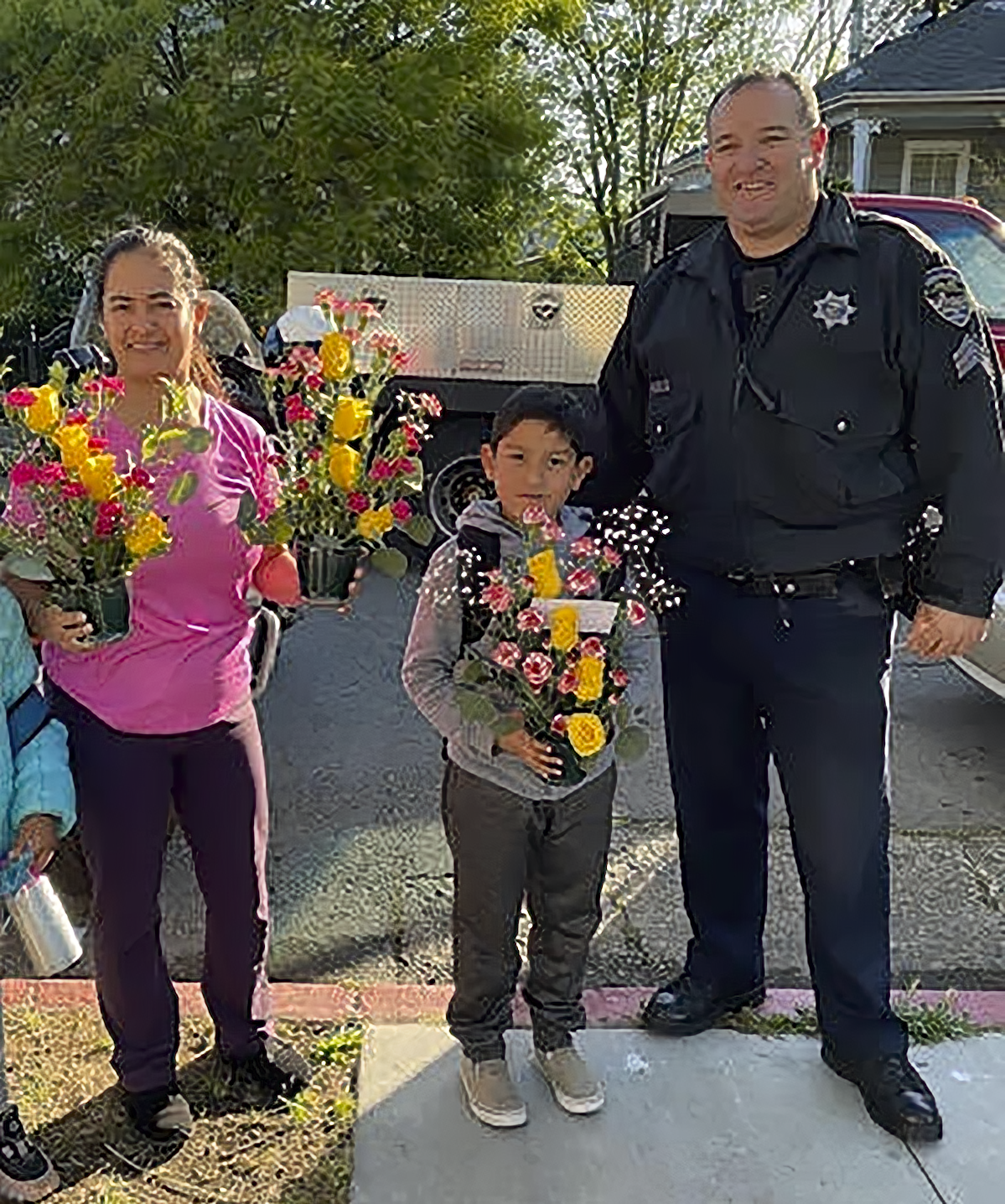
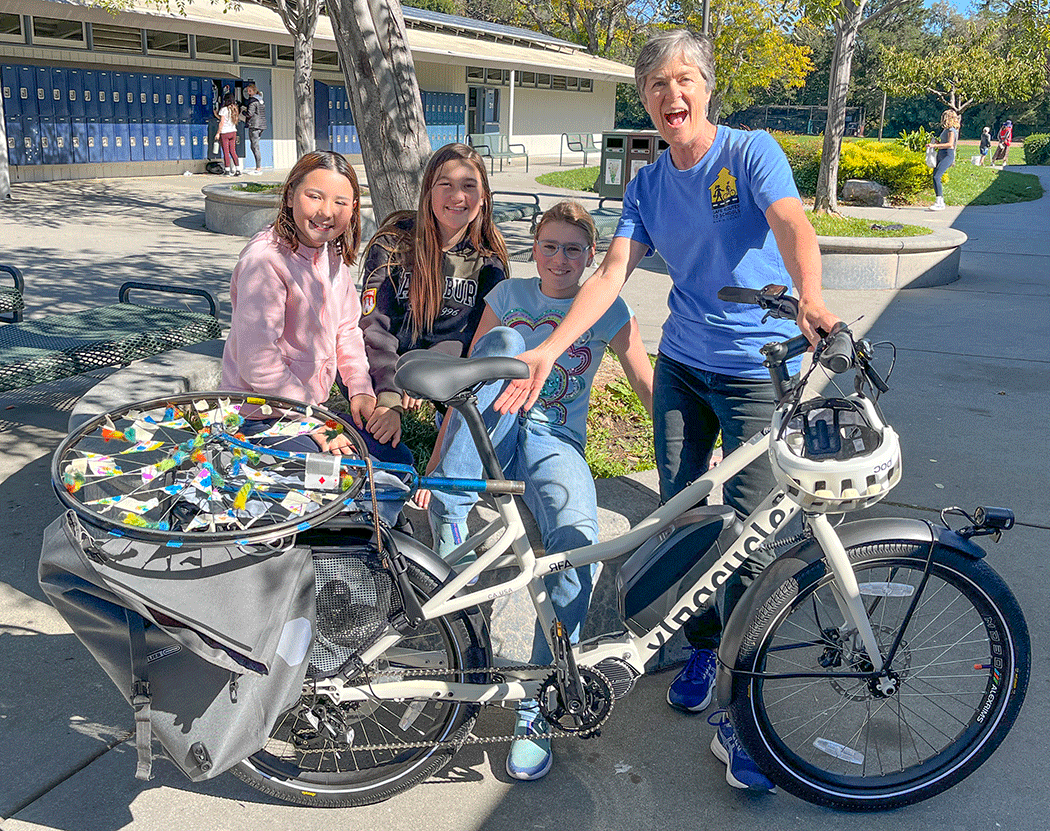
Some distances are just six miles round trip from Goodwin
’s home in Fairfax. Other times, she can be seen biking at dawn to schools in Mill Valley and Novato.“It’s fantastic! I can travel farther now that I have an electric Xtracycle. The students are always impressed with how far I travel to get to their school, especially with heavy loads. It
’s been a game-changer,” she said- Ross – Monday, August 5, 2024 at 10 AM
- Novato – Wednesday, September 11, 2024 at 5 PM
- Kentfield – Thursday, September 5, 2024 at 9:30 AM
- Reed – Thursday, September 12, 2024 at 10 AM
- West Marin – Tuesday, September 17, 2024 at 5 PM
- San Rafael – Wednesday, September 4 at 5 PM
- Sausalito-Marin City – Thursday, September 19, 2024 at 5 PM
- Larkspur-Corte Madera – Thursday, September 26, 2024
at 4 PM - Ross Valley – Friday, September 13, 2024 at 10 AM
- Mill Valley – Wednesday, September 4, 2024 at 9:30 AM
- Miller Creek – Monday, September 9 at 4 PM
Contact Wendi Kallins if you are interested in joining a task force or if you would like a copy of archived task force meeting notes.

There would not be a Safe Routes to Schools program without dedicated parent volunteers and family liaisons. As the 2023-24 school year comes to an end, the organization would like to recognize their work. Through their commitment and effort, more students are getting to school safely and actively. Although these parents and school staff are “retiring” from their role, their influence will continue to be felt. Safe Routes salutes and thanks the following:
VIRGINIA MENZEL – Loma Verde Elementary
After dedicating 23 years to Novato schools, community liaison Virginia Menzel is retiring from the district. Throughout her time at Loma Verde Elementary, she played a pivotal role in sustaining the program, especially during the past three years. During this period, she actively participated in parent volunteer and family liaison meetings, co-hosted welcome tables, and publicized various events and contests.
BRIA LARSON – Park Elementary
For the past two years, Bria Larson managed a robust Safe Routes program at Park School in Mill Valley. “Walk and Roll Wednesdays were a veritable party at Park School. We had it all…music, smiles, and so many pencils and erasers! I loved getting to know kids from all grades, and even had some student helpers greeting their classmates each month,” Larson said. “The sense of community and fun was infectious.”
Many teachers and school administrators in Marin County use their bikes (or skateboard!) for transportation. Most do it rain or shine, traveling distances as long as Petaluma-San Rafael. Regardless how short or long their commute, these educators exemplify a healthy life style and care for the planet, not only for their students but also for the community at large. They are the perfect roll models. Here are just six of them.
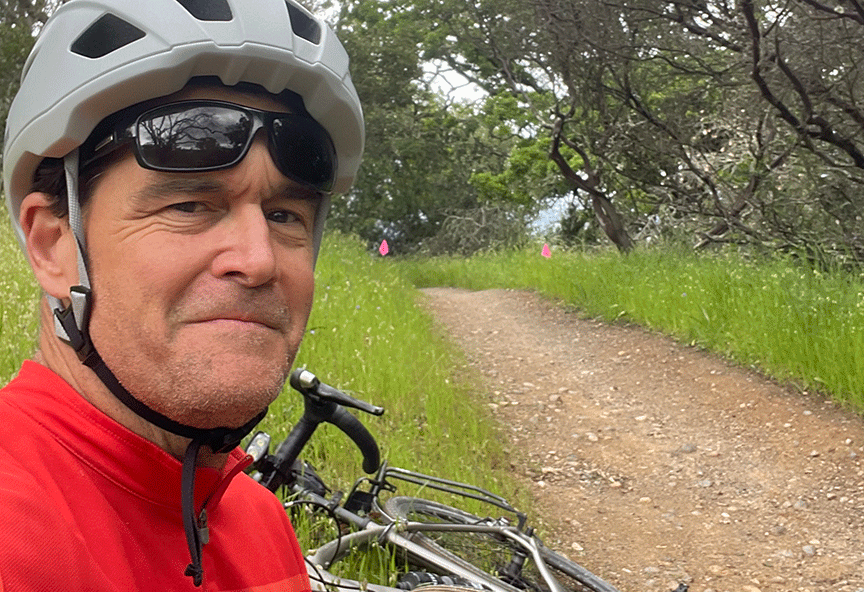
MATT POPE: Venetia Valley School (San Rafael)
Matt Pope is the ultimate “green” commuter. Everyday, he rides SMART from his home in Petaluma to downtown San Rafael. Then, he bikes to Venetia Valley School, where he teaches. Sometimes, Mr. Pope gets off in Novato and rides all the way back to Petaluma. “I never realized how much mental stress comes with driving and waiting in traffic. Now, I arrive at school at least an hour before the bell which gives me time to ground myself, breathe and prepare for each day,” he said.
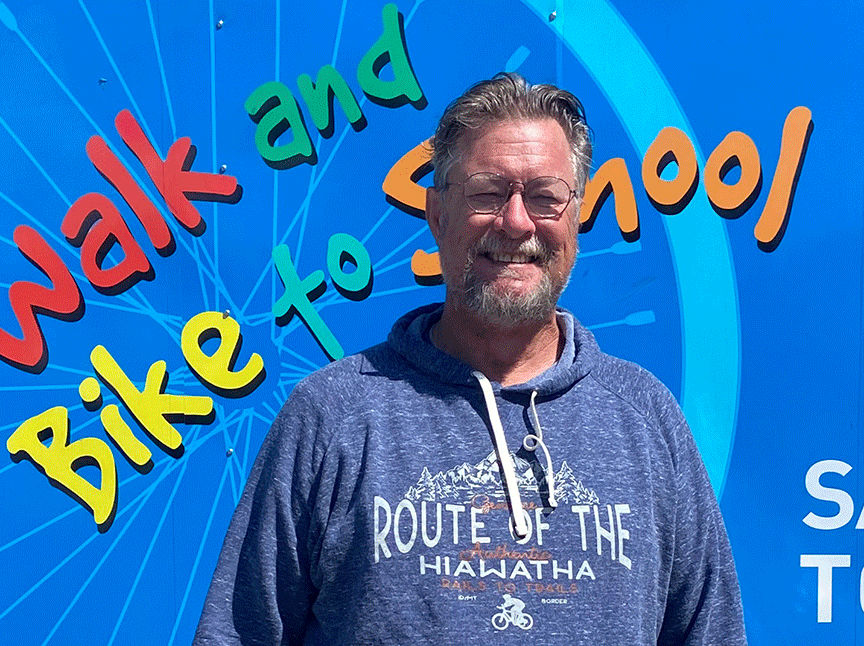
MIKE RUNYEON: Rancho Elementary (Novato)
“Even in the rain, I still ride. Of course, I make sure to dress accordingly. There is no bad weather, just bad equipment,” says Mike Runyeon, a PE teacher at Rancho Elementary, referring to his endurance during the rainy season. He normally rides SMART from Petaluma to a Novato station and from there, rides his bike to school.
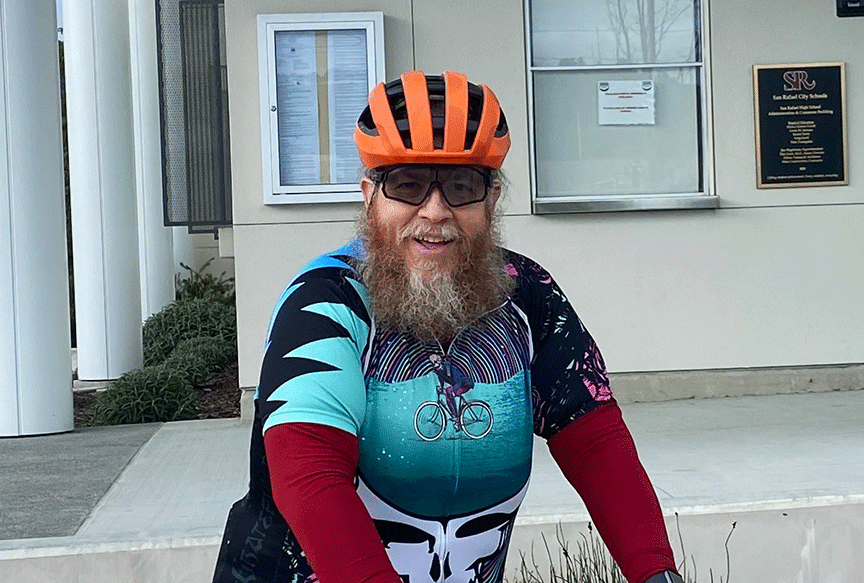
DAVID SNAITH: San Rafael High School (San Rafael)
David Snaith, a math teacher at San Rafael High School, commutes 12 miles two or three days a week. “Seeing people out and about, whether they are walking, riding, or gardening in their front yard is wonderful. That creates a sense of community I never get while in my car,” he said.
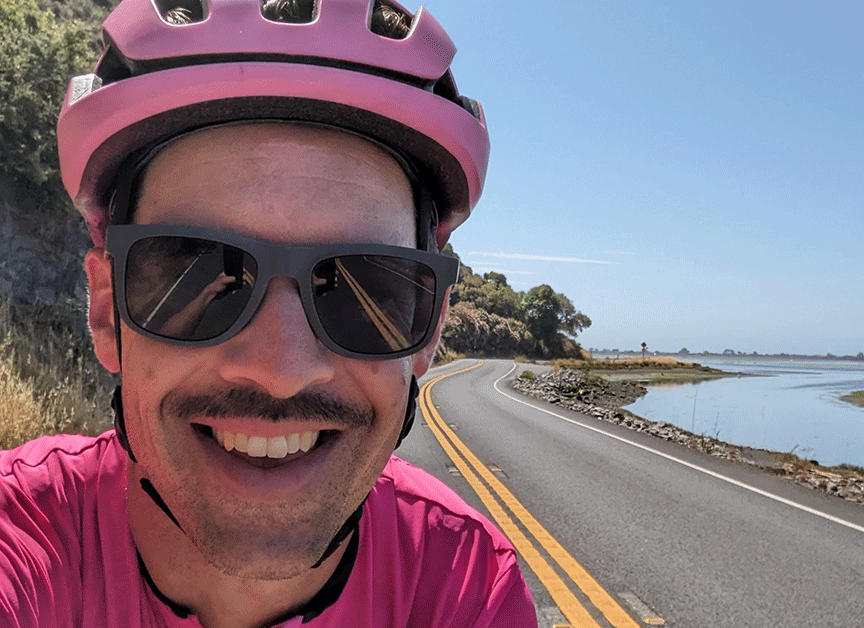
JAMES SIEVERT, Bel Aire Elementary (Tiburon)
His love of cycling and children led James Sievert, a teacher by training, to serve as lead instructor with Safe Routes to Schools for ten years. Now, as a PE teacher, Mr. Sievert rides to class from his home in Mill Valley every day, rain or shine, and also does crossing guard duty at his school. He says that, “It is great to help our students who are walking, biking or using remote drop off to get home from school.”
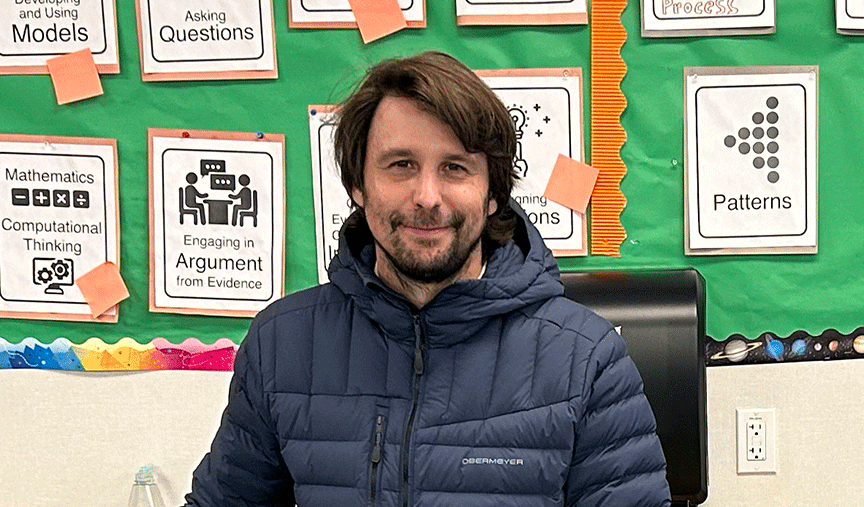
BRANDON DEMONT: Miller Creek Middle School (San Rafael)
Brandon DeMont teaches 7th and 8th grade science. Every day, he commutes about six miles from Fairfax, over a steep hill in Sleepy Hollow and down to Terra Linda, where the school is located. For him, riding his bike is far faster and more rewarding than driving a car. “Riding my bike gives me a chance to get exercise and feel ready for a full day of teaching,” he says. “When I ride home after a busy day I process the events of the day and reflect before joining my wife and two-year-old daughter at home.”
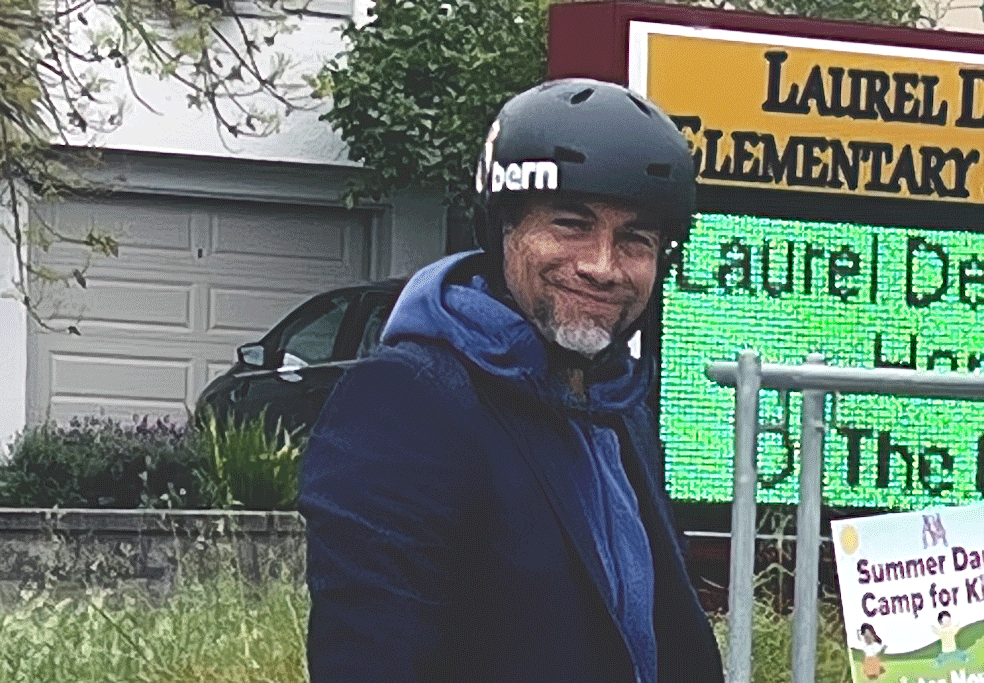
JIMMY LOPEZ: Laurel Dell Elementary (San Rafael)
Laurel Dell students are getting used to seeing their new Principal Jimmy Lopez going around school in his very ‘cool’ skateboard. While it’s not possible for Mr. Lopez to commute on his skateboard because he lives in the East Bay, he doesn’t miss the opportunity to show the children not only his skills but also the benefits of rolling to school. “I have loved skateboarding since I was a kid,” he says.
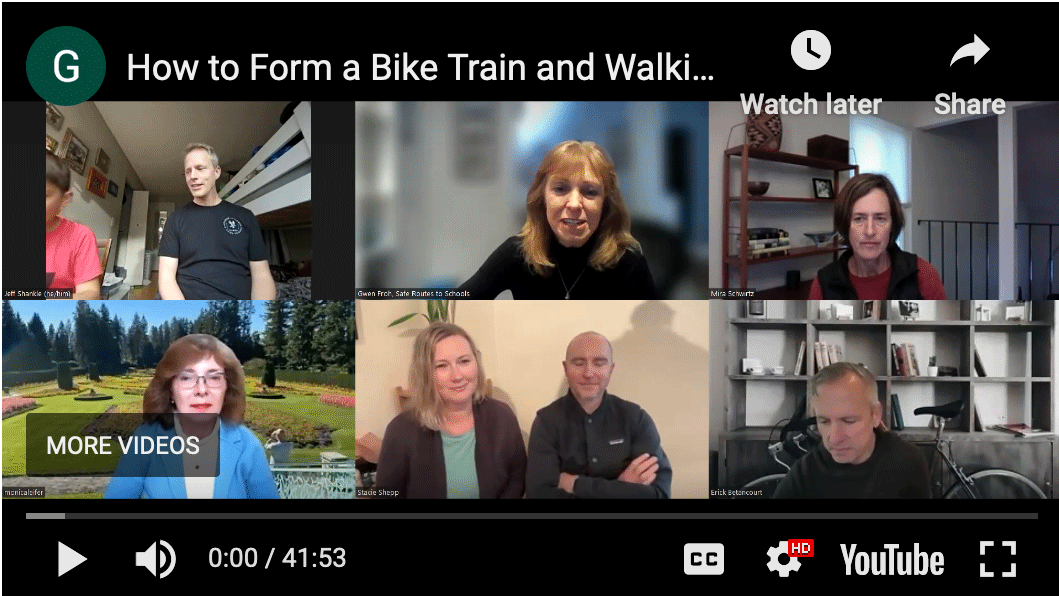
A brand-new video about how to create a bike train and a walking school bus is now available for all interested on the Safe Routes to Schools website.
“Bike trains” and “walking school buses” are groups of students who bike or walk together to school under parental supervision. Traveling as a group increases visibility to cars and therefore makes biking or walking safer. It encourages fun and friendship and it often incorporates cooperation among parents so that some can take the lead while others stay home or go to work.
The instructional material was put together with the cooperation of seasoned parent volunteers who have been doing it for a long time. During a recorded webinar in April, the volunteers shared their experience and tips on how to succeed at encouraging young riders and their families to join their groups. The webinar is full of useful tips on how to organize a route, how to encourage your child to bike or walk every day, how to communicate and cooperate with other parents in supervising.
Safe Routes to Schools is currently intent on increasing the number of groups traveling together to school all over Marin County in the near future. “The walking school bus was transformative for our family because it created an opportunity to spend uninterrupted time without cell phones,” said Juliet Starrett, a parent at Vallecito elementary who started a walking school bus. “And, our kids showed up ready for school.”
Parents who actively commute with their children say it is a precious time to connect with each other and to enjoy some natural sights and sounds along the route.
